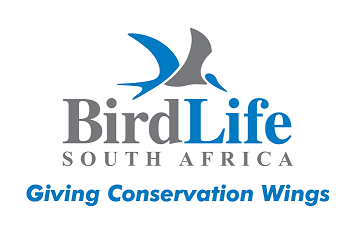Grey Crowned Crane (Balearica regulorum)
CAR summary data
Habitat and noted behaviour
Sightings per Kilometre
Please note: The below charts indicate the sightings of individuals along routes where the species has occured, and NOT across all routes surveyed through the CAR project.
Regional Status


IUCN Data (Global)
IUCN 2024. IUCN Red List of Threatened Species. Version 2024-1 (www)Assessment year: 2024
Assessment Citation
BirdLife International 2024. Balearica regulorum. The IUCN Red List of Threatened Species 2024: e.T22692046A240198049. Accessed on 23 December 2025.Taxonomic notes:
Formerly considered conspecific with B. pavonina (lumped species sometimes erroneously listed as B. regulorum), but differences revealed by electrophoresis, together with those in vocalizations, bare parts and plumage, as well as in genetic evidence (Krajewski and King 1996, Krajewski et al. 2010), advocate recognition of two species. Two subspecies recognized.Geographic range:
Balearica regulorum occurs in eastern and southern Africa, with B. r. gibbericeps occurring from the Democratic Republic of the Congo, Rwanda, Uganda and Kenya south through Tanzania and Zambia to northern Mozambique, with small numbers in Angola, Burundi, Malawi and very small numbers in South Sudan. Nominate race B. r. regulorum found from southern Mozambique south through Zimbabwe to South Africa and west in small numbers to Namibia and very small numbers in Botswana.Habitats:
Behaviour This species is not migratory although it may make variable local and seasonal movements depending on the abundance and distribution of food, nest-sites and rainfall (Archibald et al. 2020). The timing of breeding varies in relation to the rains, with the breeding of East African populations peaking during dry periods, but with the breeding of populations in the drier parts of southern Africa peaking during wet periods (del Hoyo et al. 1996, Archibald et al. 2020). The species nests in solitary territorial pairs (Urban et al. 1986, Hockey et al. 2005) but often flocks together and roosts communally at night (Archibald et al. 2020, Hockey et al. 2005) in groups of up to 20-200 individuals (Urban et al. 1986) during dry periods in the drier part of its range (e.g. Namibia and South Africa) (Archibald et al. 2020). The abundance and distribution of food and suitable nesting sites are the key ecological factors determining the size of the home range of this species and the extent of local and seasonal population movements (Meine and Archibald 1996, Archibald et al. 2020). Habitat The species inhabits wetlands such as marshes, pans and dams with tall emergent vegetation, riverbanks, open riverine woodland, shallowly flooded plains and temporary pools with adjacent grasslands, open savannas, croplands, pastures, fallow fields and irrigated areas (Urban et al. 1986, del Hoyo et al. 1996, Meine and Archibald 1996, Hockey et al. 2005, Archibald et al. 2020). It shows a preference for short to medium height open grasslands adjacent to wetlands for foraging, and breeds within or at the edges of wetlands especially in marshes with water around a meter deep and with emergent vegetation a meter above the water (Urban et al. 1986, Meine and Archibald 1996). It has also more recently been observed feeding in landfill sites in Uganda (Archibald et al. 2020). It roosts in water along rivers or in marshes, or perches on nearby trees or on utility line posts (Urban et al. 1986, Meine and Archibald 1996, Archibald et al. 2020). A Maxent-modelling study showed that while wetlands are important for the species in Uganda, temperature seasonality can also be important (Stabach et al. 2009). Diet The species is a generalist, its diet consisting of seed heads (e.g. of sedges Cyperus spp.), new tips of grasses (Archibald et al. 2020), agricultural pulses, nuts and grain (Meine and Archibald 1996), insects (Orthoptera, larval Lepidoptera), frogs, lizards and crabs Potamon spp. (Archibald et al. 2020). Breeding site The nest is a circular platform of uprooted grasses and sedges (Archibald et al. 2020) concealed in tall emergent vegetation (greater than one meter in height) (Urban et al. 1986, Meine and Archibald 1996) in or along the margins of wetlands such as marshes (Archibald et al. 2020) with water approximately 50-100 cm deep (Urban et al. 1986, Archibald et al. 2020, Wamiti et al. 2022). The species may also rarely nest in trees (Archibald et al. 2020).Population:
The current population size was estimated at 26,500-33,500 individuals in 2014 (Morrison 2015). However, more recent population sizes censuses show a population size of 900 individuals in Rwanda in 2023 (with an additional 166 individuals having been released) (Nsengimana et al. 2023) compared to 50-500 in 2014 (Morrison 2015), 8,500-10,000 individuals recorded in 2023 in Kenya (Wamiti et al. 2023) compared to 10,000-12,500 individuals in 2014 (Morrison 2015), and 10,500-13,000 in Uganda (Engoru et al. in prep.) compared to 6,500–8,000 (Morrison 2015). In Tanzania, the Bird Atlas project estimate 1000-1600 individuals (Baker 2019, L. Jordan in litt 2024) from 600-1000 in 2014 (Morrison 2015), which is likely due in part to increased survey effort, but also to some movement between between Rwanda and Tanzania in the Kagera Valley, and of movement of birds arriving from Kenya between Rwanda and Tanzania (Baker 2019, L. Jordan in litt 2024), which may lead to a small degree of overlap between population sizes in these countries.The total population size is therefore estimated to be approximately 30,200-36,900 individuals and is kept in the 20,000-49,999 range. This roughly equates to 20,100-24,600 mature individuals.
The subspecies Balearica regulorum gibbericeps, present in eastern Africa, comprises approximately 75% of the species' total global population size, with Kenya, Uganda and Zambia holding the highest population sizes for this subspecies. South Africa and Zimbabwe hold the highest population sizes for the subspecies Balearica regulorum regulorum.
Threats:
The species is threatened by the loss and degradation of wetland breeding areas through drought-related changes in land-use, such as for cultivation (T. Fakarayi in litt. 2016) and tree plantations (e.g., Eucalyptus spp. [Morrison and Dodman 2019]), drainage and overgrazing (Archibald et al. 2020) (e.g., uncontrolled cattle grazing [Kampamba and Pope 1996]), as well as through the heavy use of agricultural pesticides (Meine and Archibald 1996, Archibald et al. 2020), declines in fallowing practices, high sedimentation rates (Archibald et al. 2020) (due to deforestation [Meine and Archibald 1996]), uncontrolled grass and deep litter fires in the breeding season (Kampamba and Pope 1996), dam construction (Meine and Archibald 1996, Archibald et al. 2020) (for hydroelectric power generation [Kampamba and Pope 1996]) and groundwater extraction, leading to changes in hydrological regimes (Meine and Archibald 1996, Archibald et al. 2020) (e.g. unseasonal flooding [Kampamba and Pope 1996]).The species is also threatened by live-trapping (for trade), egg-collecting and hunting (Meine and Archibald 1996, Kampamba and Pope 1996, Olupot et al. 2009), and by indirect disturbance from the hunting of large mammals or ducks in wetlands and the activities of fisheries (Kampamba and Pope 1996) and agriculture, the latter to the point where breeding and fledging success is severely reduced in areas of high disturbance (Morrison and Dodman 2019). Preliminary studies of information from Kenya, Uganda, Tanzania, South Africa, Zimbabwe, Rwanda and Namibia have shown that that the illegal captive trade is particularly significant from Uganda, Tanzania and Rwanda (Morrison 2008, 2009, Baker 2019), with the demand being domestic (South Africa and Rwanda) and from the Middle/Far East, and specifically relating to the pet trade, captive facilities and informal zoos (K. Morrison in litt. 2011). To this end, eggs and chicks are taken from the wild to be raised in captivity (Morrison and Dodman 2019). Due to human population pressure, the cranes are increasingly living in closer proximity to people, exposing them to disturbance and making them more vulnerable to hunting (W. Olupot in litt. 2011, O. Mabhachi in litt. 2012).
The species is also persecuted in some areas (e.g. southern Africa) due to its use of agricultural land for foraging, as it will destroy maize crops at their early stage of germination (Hockey et al. 2005, T. Fakarayi in litt. 2016). Large numbers of Grey Crowned Cranes are also killed annually by poisoning in e.g., Kenya, mainly as retaliation or to prevent of crop damage (Morrison 2008, 2009), although poisoning (both intentional and accidental) occurs throughout its range (Morrison and Dodman 2019).
In addition, in South Africa in particular, an increase in coal mining is threatening much of the grassland/wetland habitat where the species breeds (K. Morrison in litt. 2011, Morrison and Dodman 2019), and plans to extract peat from wetlands in Rwanda may threaten the species in the future (Morrison and Dodman 2019). Mortality of birds due to electrocution and collision with overhead power lines is a serious threat in Uganda, South Africa and Tanzania, and is likely to increase significantly in the future, across its entire range (K. Morrison in litt. 2011, J. Harris in litt. 2012, Morrison and Dodman 2019). The highly virulent avian influenza H5N1 has also been shown to affect the species, so far at an individual level, as has been observed in the Eastern Cape population in South Africa, where 40 individuals were killed by the virus in 2023 (Jordan 2024 in prep.). Finally, climate change is expected to affect the species' habitat and the crop types the species forages on, as increased temperatures and decreases in overall rainfall, as well as increases in extreme weather (e.g., droughts, hail) over Southern Africa are expected by 2050 (Raupach et al. 2021, Chemura et al. 2022, Hemminger et al. 2022).
The cumulative effect of some of these threats (e.g., habitat loss and fragmentation, illegal trade, and disturbance combined) is thought to be highly impactful (Morrison and Dodman 2019).
Conservation measures:
Conservation Actions UnderwayCITES Appendix II. Community-based wetland conservation projects have been undertaken in Kenya, with some captive breeding populations established (ARKive 2010, Morrison 2014). The international single species action plan was revised by Wetlands International / IUCN Crane Specialist Group, and endorsed at the AEWA MoP in November 2015 (Morrison 2015). Monitoring occurs in at least parts of its range by the International Waterbird Census (>10 records received in >50% of the years that the census has been running in the relevant region); in Botswana by BirdLife Botswana; in South Africa, Grey Crowned Cranes are monitored through the Avifaunal Road Counts coordinated by the Animal Demographic Unit at the University of Cape Town and through annual aerial surveys conducted by the EWT and Ezemvelo KwaZulu-Natal Wildlife over the range of the species in KwaZulu-Natal, and in Zambia regular surveys for cranes are conducted in Lochinvar, Blue Lagoon, Kafue, South Luangwa, Chikuni, Nsumbu and Liuwa National Parks (K. Morrison in litt. 2016). In Kenya, countrywide censuses of the species started in 2020 (Wamiti et al. 2020, Wamiti et al. 2023). Crane Conservation Volunteers and NABU (BirdLife Germany) have conducted crane surveys and community outreach around Lake Ol’ Bolossat in the central parts of Kenya since 2016 (C. Craig and L. Jordan in litt. 2024). In Zimbabwe Local Community Conservation Groups/Site Support Groups in Driefontein Grasslands are actively involved in raising the awareness of this species (T. Fakarayi in litt. 2016), and in Rwanda conservation efforts of the International Crane Foundation have started around Rugezi Marsh (Beilfuss and Morrison 2012), with annual national censuses for the species having started in 2017 (Nsengimana 2020). Local awareness-raising and community-based crane conservation projects, and the associated fundraising for these projects are being undertaken in many countries across the species' range, including in Kenya, Rwanda, South Africa, Tanzania, Uganda, Zambia and Zimbabwe (Morrison and Dodman 2019). The International Crane Foundation in partnership with the Endangered Wildlife Trust also monitor crane supply and trade routes and address issues relating to crane trade through the African Crane Trade Project (Morrison and Dodman 2019). This species is listed as Endangered in South Africa, Lesotho and Swaziland, and Uganda, and Critically Endangered in Namibia (Morrison and Smith 2015, Simmons 2015, WCS 2016). Protected areas benefit the species, particularly in Zambia, and South Africa, Kenya and Uganda have developed community-based and stewardship methods to encourage landowners to protect and conserve areas for the species (Morrison and Dodman 2019) .
Conservation Actions Proposed
Continue to conduct and increase standardised and coordinated surveys to monitor the species' total population size and trends over time. Continue researching the use of drones for improved population size monitoring and surveys, and establish species-specific protocols for such methods (Demmer et al. 2023). Continue to research their behaviour and ecology. Continue researching the factors that influence the population dynamics of the species. Monitor human-crane conflict in agricultural cropland and explore methods of mitigating these conflicts. Research the impact and extent of poisoning of the species. Discourage hunting and irresponsible pesticide use through awareness campaigns. Raise awareness of this species and promote land use practices beneficial for the species. Continue to gain understanding on the land available for and needed to conserve the species. Consider fundraising for purchase of land to create co-managed crane nature reserves. Monitor rates of habitat loss and degradation, increase the protection of suitable habitat and attempt to restore suitable habitat. Monitor levels of hunting and capture pressure, as well as levels and market chains of trade. Determine size of captive population and source of birds (C. Craig and L. Jordan in litt. 2024). Improve species protection and increase enforcement of hunting and trade legislation. Continue and extend captive breeding efforts. Monitor long-term urbanisation and infrastructure plans and energy development to understand potential future impacts on the species. Research future impact of climate change on the species and/or habitats (Morrison and Dodman 2019).
Rationale:
This species faces important threats, particularly habitat loss, fragmentation and degradation, disturbance from human activities, and the illegal removal of birds and eggs from the wild for domestication and/or illegal trade. These have caused very rapid reductions since at least the mid-1980s which, due to the long generation length of the species, remain relevant for the past three generations and this period into the near future, continuing to qualify the species as Endangered. Due in part to conservation measures, recent increases in Rwanda, Zambia and Uganda may help to reverse the overall ongoing trend in the future, and provide hope for future improvement in the species' status.Trend justification:
Overall estimates suggest that the species’ global population has declined from over 100,000 individuals in 1985 (Urban 1986) to 29,500-36,000 individuals in 2024 (Morrison 2015, Wamiti et al. 2020, Nsengimana et al. 2023, Engoru et al. in prep). Populations have overall declined in most countries since 1985, with the exception of populations in Rwanda, Zambia and South Africa, which have stabilised or increased over the past 40 years (Morrison 2015), due at least in part to conservation efforts including species' reintroductions to site protection (Morrison 2015). This apparent increase is treated with caution as the movement plus increased observation effort in some areas could explain the increase. The recent estimates from Tanzania do indicate a larger population size than previously estimated for the country, however, this may be due in part to some movement of individuals between Rwanda, Tanzania and possibly Kenya, as well as increased survey effort (Baker 2019, L. Jordan in litt. 2024). As such, the new data from Tanzania is not considered in the trend estimation, until further population data and analysis are available.When these data are extrapolated to a period of three generations (42 years) in the past using the IUCN Criterion A calculator (for the purposes of trend calculation, the 166 recently released individuals in Rwanda are not included in this exercise), the species is estimated to have declined by approximately 59% over the past three generations, and slowing to 57% between 1983 and 2025. However, despite ongoing threats, past overall declines and likely ongoing declines in many countries, the current short-term increases in population size in Rwanda, Zambia and Uganda, if sustained in the future, are high enough that it is estimated that these may dominate the overall ongoing population trend in the future, with almost half (approximately 45%) of the total global population size currently estimated to be located in these countries. On the other hand, although the population in South Africa has shown an increase over the past three generations, the overall trends in the country has been shown to be slowly declining (Jordan 2024 in prep.).
It must also be noted that the past and ongoing declines are attributed primarily to habitat loss and fragmentation and illegal removal of birds and eggs from the wild for food, traditional use, domestication and the international illegal trade market, and that these threats have not ceased. In addition, poisoning, and electrocution from and collisions with powerlines are emerging threats which also affect the species' at both individual and population levels.
 Login
Login


